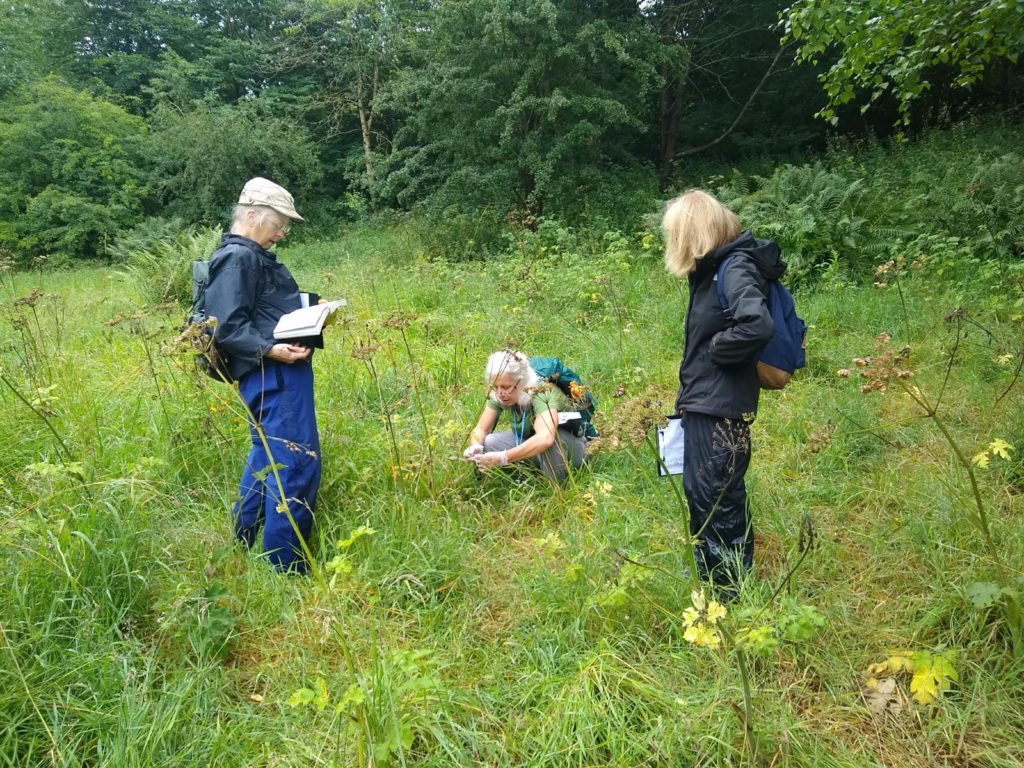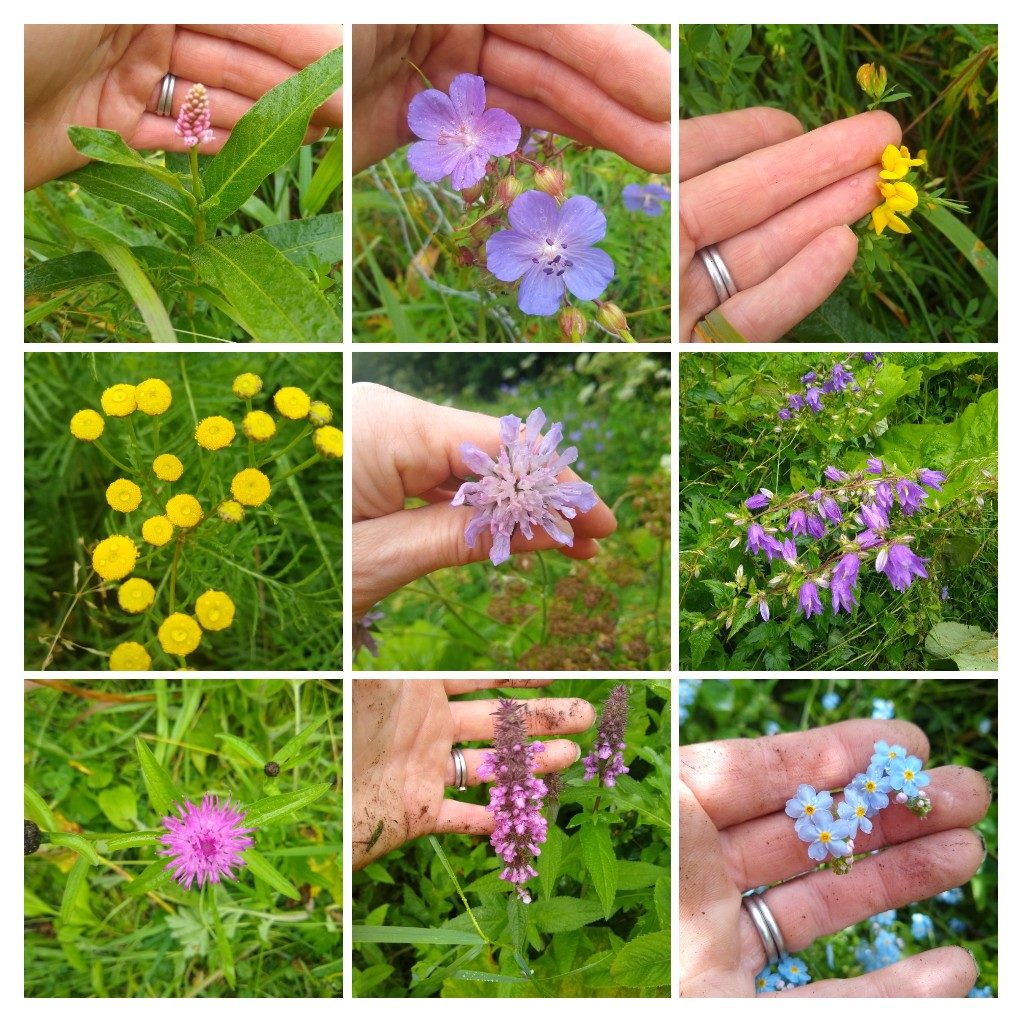Cracking the Secret Code!
The Trust has created many wildflower meadow areas along the WOL with the aim of increasing plant biodiversity and a green corridor for pollinators such as Bees and Butterflies along the river. The largest meadows that we manage are Bell’s mill meadow near the Gallery of Modern Art and Bogs mill meadow in Craiglockhart Dell.
We have been managing Bells and Bogs mill meadow for the last 9 and 7 years respectively. In late September we hand cut using traditional tools and strimmers. The cuttings are left on the meadow to allow for any last-minute seed dispersal. After two weeks, and hopefully a fair bit of footfall, we rake off all the cutting. We then move the cutting off the meadow, but nearby so that any wildlife accidentally scooped up can find their way back home. It is very physical work and can take days per meadow depending on the size of the team.

All this hard work aims to lower the nutrients in the soil as wildflowers prefer poor soil quality. Our cut and rake regime is intended to mirror the effects of small scale grazing, where in the past livestock would have removed the meadow plants by eating them.
We survey both meadows in July every year to record the plants. We have a wonderful team of skilled and knowledgeable volunteers for this tricky task. ID books and hand lenses are essential. The joy of wildflower ID is in the detail. If the base of a grass looks like striped pyjamas this positively ID’s Yorkshire fog, the stigma of American willowherb is a club shape rather than star shape and Wood forget-me-not has a submarginal leaf vein, which is absent in Field forget-me-not. It’s like a secret code that can only be cracked by the experienced flora lover with an eye for detail. Once the species list is complete, we can then compare it to previous years, monitor change and tweak our management regime accordingly.
The team were delighted (there was cheering and everything) to discover 78 different species in Bells mill meadow and 72 species in Bogs mill meadow. That’s a 36% and 24% increase from 2019 respectively. Species such as Field scabious, Bird’s-foot trefoil and Giant bellflower can be found at Bells mill meadow Bogs mill meadow has a show including Yellow rattle, Sneezewort and Melancholy thistle. Just imagine how many other species all that plant biodiversity is supporting! A massive thank you to Linda Hutton, Kate Tomlinson, Helen Knott and Charlotte Neary for cracking the code and recording all they discovered.



